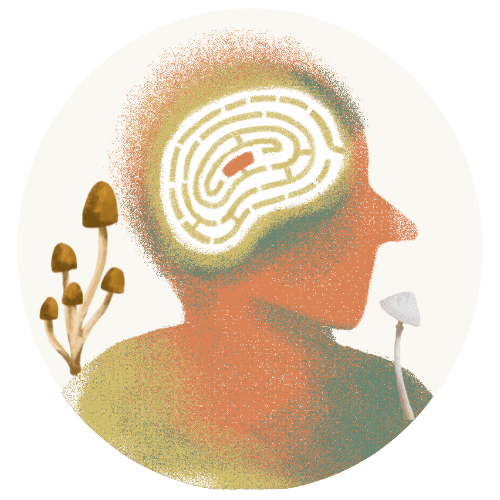MDMA

MDMA (3,4-methylenedioxymethamphetamine) uniquely bridges the psychedelic and entactogen worlds, fostering profound emotional openness without the visual alterations of classic psychedelics. Originally developed for therapeutic use, it’s now revered for its ability to dissolve interpersonal barriers while maintaining mental clarity.
At Places to Trip, we approach MDMA as a tool for healing, bonding, and rediscovering joy—never as a party commodity. When used intentionally in safe settings, it can facilitate transformative conversations, therapeutic breakthroughs, and a renewed capacity for self-love and connection.
History
First synthesized in 1912 by Merck chemist Anton Köllisch, MDMA was ignored for decades before psychotherapists in the 1970s—notably Dr. Alexander Shulgin—rediscovered its empathic properties. By the 1980s, it was used in marriage counseling and PTSD treatment until recreational popularity led to its 1985 Schedule I classification. Today, clinical trials for PTSD (led by MAPS) have demonstrated 67-72% remission rates after just 3 sessions, reigniting interest in its therapeutic potential. Underground therapy circles and conscious festival communities have preserved its intentional use despite prohibition.
Effects
- Emotional: Euphoric warmth, diminished fear response, heightened empathy (often described as "seeing hearts in people")
- Physical: Tactile sensitivity (fabrics feel luxurious), mild stimulation, jaw tension
- Cognitive: Enhanced introspection with unusual clarity (unlike alcohol’s mental fog)
- Social: Deep desire for authentic connection—loneliness often dissolves
The "hug drug" nickname undersells its depth; at proper doses in clinical settings, 80% of participants report spiritual significance.
Duration
- Onset: 30–60 minutes (slower with food)
- Peak: 1.5–3 hours of plateaued effects
- Offset: Gradual comedown over 2–4 hours
- Total: 4–6 hours (extended with redosing, but not recommended)
Note: The "Tuesday Blues" (post-use serotonin dip) is avoidable with harm reduction practices.
Medical Uses
FDA-designated "Breakthrough Therapy" for:
- PTSD (Phase 3 trials show unprecedented efficacy)
- Social anxiety in autism
- End-of-life distress
- Couples therapy (when administered clinically)
Therapeutic models emphasize:
- Dosing in quiet, comfortable rooms
- Eye masks/music to direct focus inward
- Integration therapy post-session
Risks & Side Effects
- Neurotoxicity risk from overheating/dehydration or frequent use
- Serotonin depletion (post-use depression if >1x/season)
- Hyponatremia (overhydration danger—sip don’t chug)
- Impaired thermoregulation (avoid hot tubs/raves without cooling breaks)
- Adulterant risk (25% of street "Molly" contains meth/fentanyl—test kits save lives)
Safer-Use Practices
- Test your substance (Marquis reagent turns black/purple for pure MDMA)
- Dose responsibly (80–120mg initial, +40mg booster if needed)
- Cooling strategies:
Cooling neck wraps
Electrolyte drinks (no alcohol)
Shaded rest areas - 3-month rule (minimum between uses to protect serotonin receptors)
- Post-load supplements:
R-ALA (antioxidant)
Magnesium (jaw tension)
5-HTP (48hrs after, never before)
Legality Awareness
- Illegal recreationally in most countries
- Decriminalized in parts of U.S. (Oregon)
- Legal therapy expected by 2024 (FDA fast-tracked)
- Festival tolerance varies globally (avoid UAE/Singapore)
Set & Setting Intro
MDMA’s magic lives in its social container:
- Ideal:
Small circles of trusted friends
Soft lighting + curated playlists (lyric-free for therapy)
Comfort items (blankets, massage oil)
- Avoid:
Large crowds (overstimulation risk)
Conflict-heavy environments
Solo use (misses connection potential)
Pro tip: Write letters to yourself/loved ones pre-dose for guided reflection during the peak.
